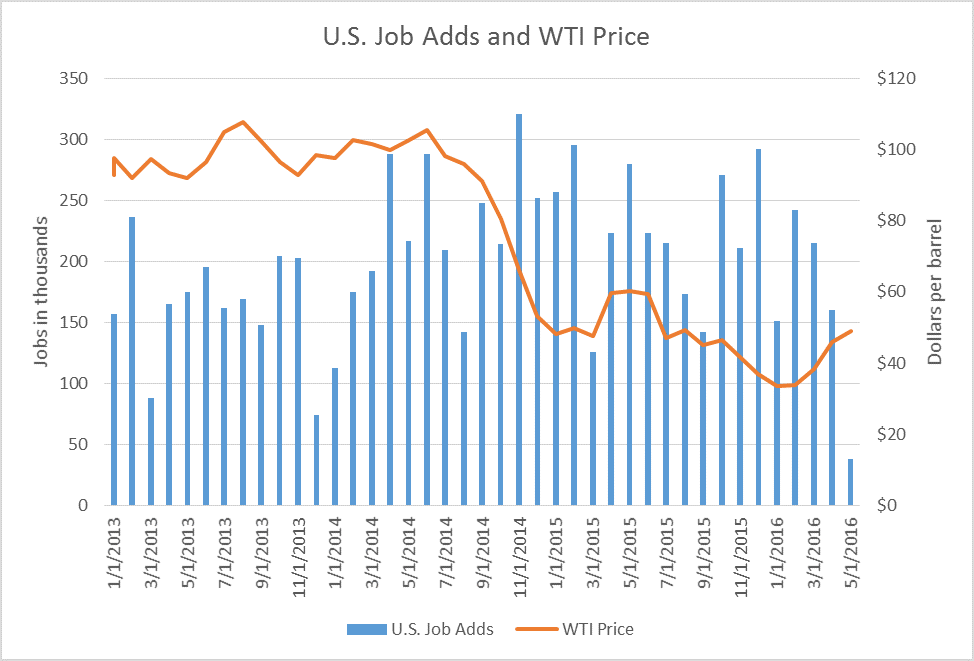The Bureau of Labor Statistics released the June report on unemployment today. Unemployment fell from 5.0% to 4.7% and the economy added only 38,000 jobs in May. The job gain was the lowest since 2010.
In the last few years, the market has averaged gains of 200,000 jobs per month. April’s gains of 123,000 jobs and the May gain of 38,000 are well below the average for the last few years.
A few notable points on this report. First is the month long strike occurring at Verizon, which depressed information sector payrolls by 34,000 jobs. Underscoring the report’s weakness, employers hired 59,000 fewer workers in March and April than previously reported.
Also of note is the decline in the U-3 unemployment rate from 5.0% to 4.7%. This dip is largely attributable to the fact that 458,000 Americans gave up the search for work. The U-3 rate is the most commonly referenced number for unemployment. The U-6 unemployment rate, a favorite of Fed Chairman Janet Yellen remained unchanged at 9.7% from April, and is down slightly from 9.9% at the beginning of the year. The U-6 rate counts the full-time unemployed as well as workers who have become discouraged and stopped looking for employment, but still want to work.
The weak report bucks data on consumer spending, industrial production and housing that have indicated the economy was gaining momentum after growth slowed to a 0.8 percent annualized rate in the first quarter.
The positive indications being given off by the economy had given credence to a potential interest rate hike from the Fed in June. This report will likely give pause to Janet Yellen and the Fed in its rate raise discussion.
Silver lining: wages grew 2.5% in May
Perhaps the only slightly upbeat sign was wage growth, which continued to show signs of life in May, albeit at a slow pace historically. Wages grew 2.5% in May. The Fed wants to see wage growth around 3.5%.


